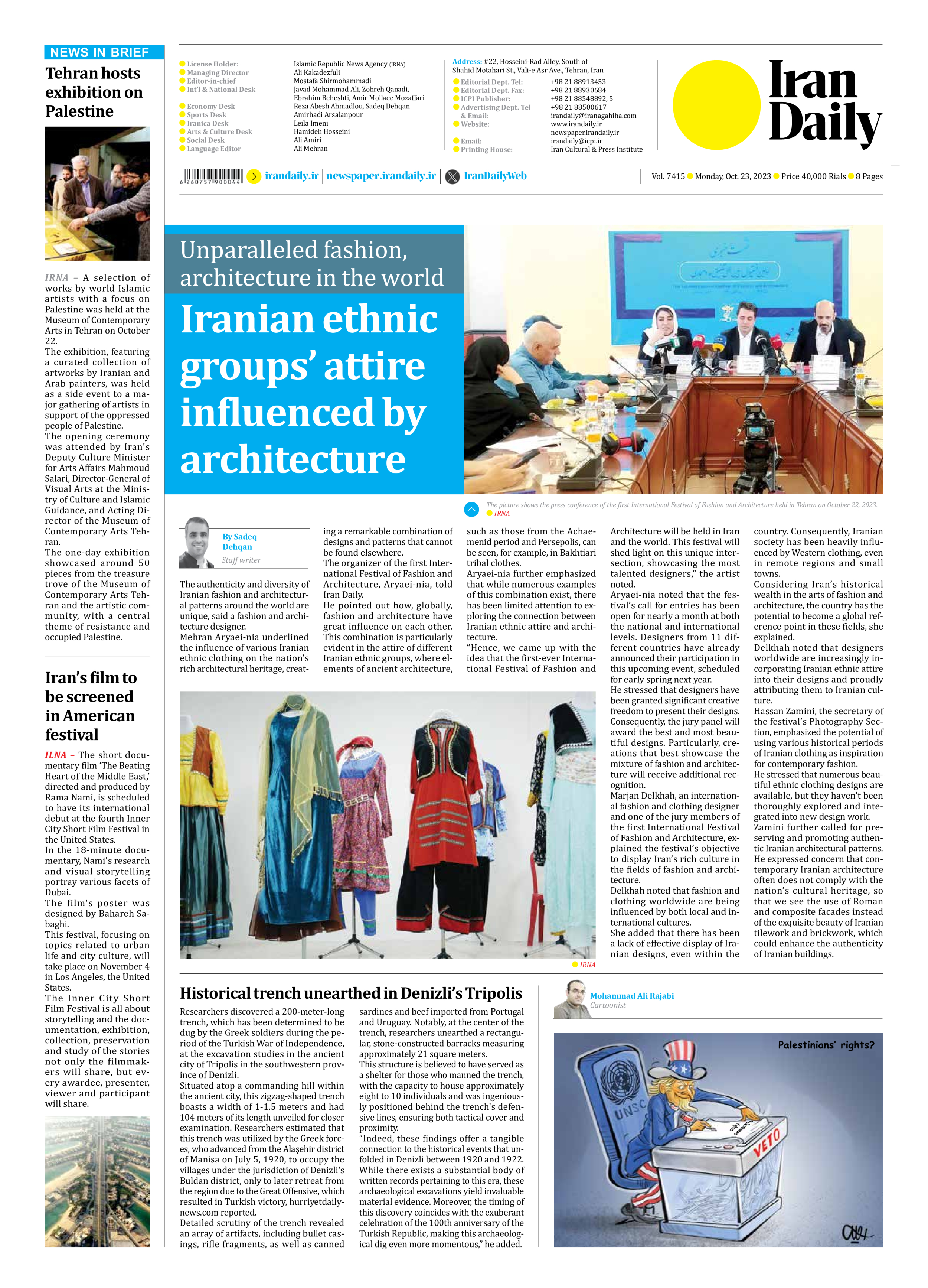
Unparalleled fashion, architecture in the world
Iranian ethnic groups’ attire influenced by architecture
By Sadeq Dehqan
Staff writer
The authenticity and diversity of Iranian fashion and architectural patterns around the world are unique, said a fashion and architecture designer.
Mehran Aryaei-nia underlined the influence of various Iranian ethnic clothing on the nation’s rich architectural heritage, creating a remarkable combination of designs and patterns that cannot be found elsewhere.
The organizer of the first International Festival of Fashion and Architecture, Aryaei-nia, told Iran Daily.
He pointed out how, globally, fashion and architecture have great influence on each other. This combination is particularly evident in the attire of different Iranian ethnic groups, where elements of ancient architecture, such as those from the Achaemenid period and Persepolis, can be seen, for example, in Bakhtiari tribal clothes.
Aryaei-nia further emphasized that while numerous examples of this combination exist, there has been limited attention to exploring the connection between Iranian ethnic attire and architecture.
“Hence, we came up with the idea that the first-ever International Festival of Fashion and Architecture will be held in Iran and the world. This festival will shed light on this unique intersection, showcasing the most talented designers,” the artist noted.
Aryaei-nia noted that the festival’s call for entries has been open for nearly a month at both the national and international levels. Designers from 11 different countries have already announced their participation in this upcoming event, scheduled for early spring next year.
He stressed that designers have been granted significant creative freedom to present their designs. Consequently, the jury panel will award the best and most beautiful designs. Particularly, creations that best showcase the mixture of fashion and architecture will receive additional recognition.
Marjan Delkhah, an international fashion and clothing designer and one of the jury members of the first International Festival of Fashion and Architecture, explained the festival’s objective to display Iran’s rich culture in the fields of fashion and architecture.
Delkhah noted that fashion and clothing worldwide are being influenced by both local and international cultures.
She added that there has been a lack of effective display of Iranian designs, even within the country. Consequently, Iranian society has been heavily influenced by Western clothing, even in remote regions and small towns.
Considering Iran’s historical wealth in the arts of fashion and architecture, the country has the potential to become a global reference point in these fields, she explained.
Delkhah noted that designers worldwide are increasingly incorporating Iranian ethnic attire into their designs and proudly attributing them to Iranian culture.
Hassan Zamini, the secretary of the festival’s Photography Section, emphasized the potential of using various historical periods of Iranian clothing as inspiration for contemporary fashion.
He stressed that numerous beautiful ethnic clothing designs are available, but they haven’t been thoroughly explored and integrated into new design work.
Zamini further called for preserving and promoting authentic Iranian architectural patterns.
He expressed concern that contemporary Iranian architecture often does not comply with the nation’s cultural heritage, so that we see the use of Roman and composite facades instead of the exquisite beauty of Iranian tilework and brickwork, which could enhance the authenticity of Iranian buildings.







